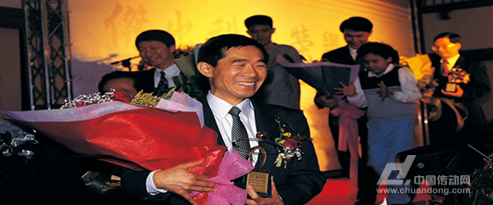In recent years, the semiconductor industry in mainland China is rapidly rising. The biggest reason for this inevitable is that Taiwan’s semiconductor talents have entered the mainland in the West and have created many opportunities and experience for the mainland. China’s full support of the semiconductor industry has also set off an upsurge of talent in Taiwan’s semiconductor industry. However, the high-level talents who are well-qualified and possess great talents are aggressively moving westward. It is worthwhile for the government to face the hidden crisis. A chairman of a semiconductor equipment company is a bit happy and somewhat helpless, saying that the semiconductor industry in mainland China has flourished in recent years. In the past, his major customers came from Taiwan Semiconductor, but now he has orders for semiconductor equipment purchased by customers in mainland China much higher than in the past few years. What's surprising is that he recently conducted business in mainland China. Most of the semiconductor's principals are high-ranking executives who had previously dealt with in Taiwan. A bunch of talents jumped in China In late October, the chairman stepped into a 29-story new glass curtain building located in the Ziguang Group, Haidian District, Beijing, to visit senior officials and negotiate business. Recently, he has increased his chances of visiting mainland China and observed the rapid flow of high-level semiconductors across the Taiwan Strait. However, when he saw it with his own eyes, it was still a bit of a shock. "Sun Shiwei's office on the 28th floor is next to Gao Qiquan (office)!" The chairman smiled. Sun Shiwei is an old U-Tian person who has served as executive vice president, chief operating officer, chief executive officer, and vice chairman of UMC. Gao Qiquan is the former general director of South Asia Branch and the former president of Central Asian Branch, and has “Taiwan DRAM (dynamic random access memory)â€. Godfather. In the past, there were two individuals in the semiconductor industry in Taiwan. Today, they worked together in Beijing for the Ziguang Group, and they respectively held positions in semiconductor and memory companies. From these two individuals who came from Taiwanese semiconductor and memory sectors respectively, it is clear that Ziguang Group's future semiconductor and memory business will pursue a dual-track strategy. Sun Shiwei and Gao Qiquan are not the few cases in which semiconductor companies in mainland China scrambled for high-level talents in Taiwan. On October 16, a personnel release issued by SMIC officially announced that Liang Mengsong, senior director of TSMC R&D, will take over the joint CEO. The concurrent executive director also shocked the cross-strait semiconductor industry. On the next day, SMIC’s closing price was HK$10.14 (approximately NT$39.66), which was a 1.5% increase from the closing price of HK$9.99 (approximately NT$39.08) on the 16th. Obviously, the market generally optimistic about the news of Liang Mengsong's joining SMIC. Even more people claim that Liang Mengsong may be the number one person influencing the global wafer pattern in the future. Because he has a long-term research and development talent, he is best at the core technology of advanced process--FinFET (Fin Field effect transistor). Digging people digging technology to force TSMC Industry figures estimate that after Liang Mengsong joins SMIC, he will have the opportunity to quickly increase the yield of SMIC’s 28nm process, and even squeeze the market penetration rate of TSMC’s 28nm, which will inevitably also affect other markets. Competitors pose a threat. Prior to joining Liang Mengsong, on December 21, 2016, SMIC announced that it had hired Jiang Shangyi, the former chief operating officer of TSMC, as an independent director. At that time, the semiconductor industry across the Taiwan Strait was still in turmoil. xiaojuzizhi Ganzhou Green days Biochemical Technology Shower folder mechanic Co., Ltd. , https://www.cn-gangdao.com